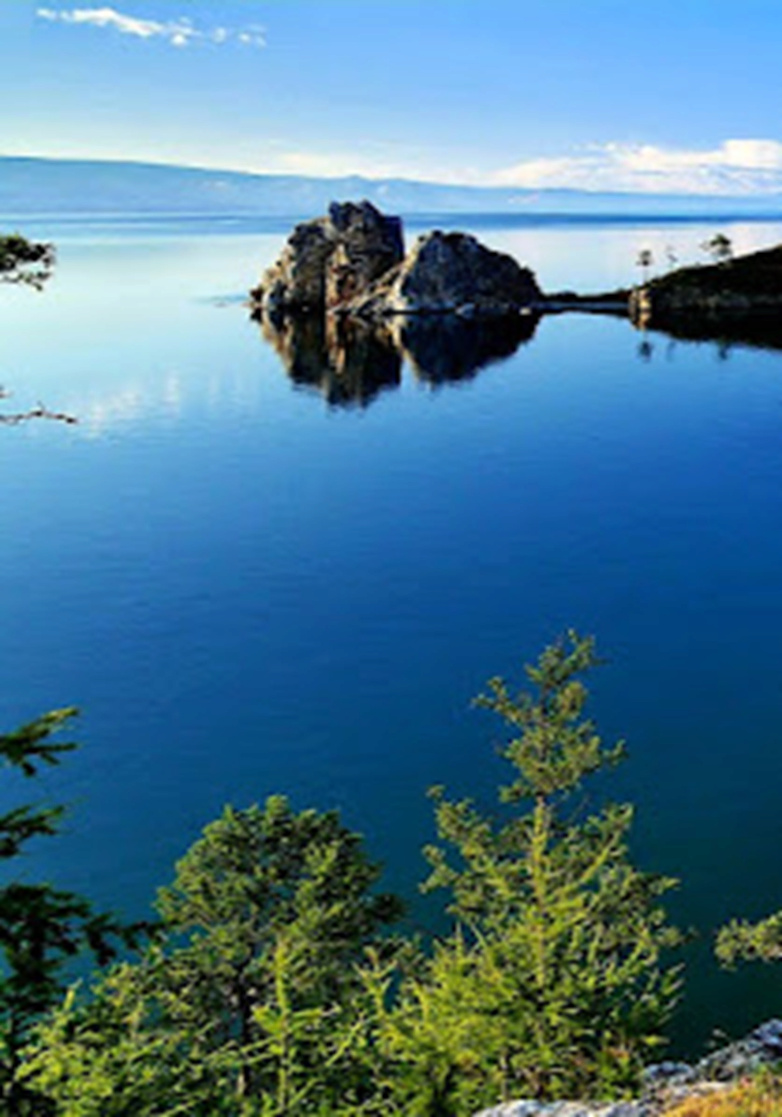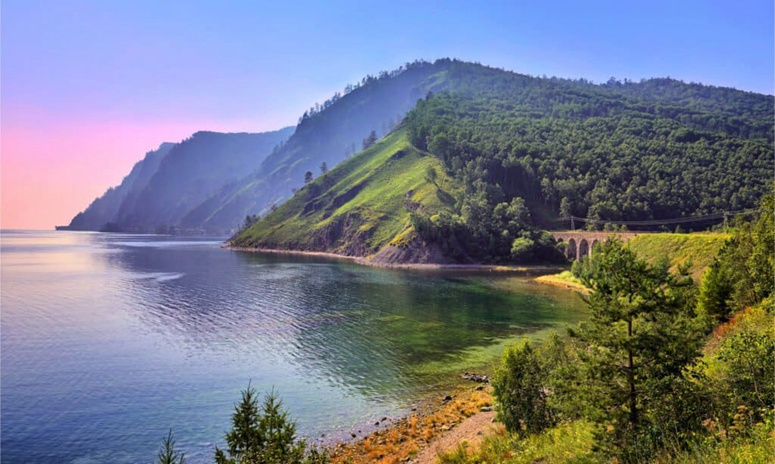The 5 largest and deepest lakes in the world

A lake is an area or area of land that contains water and is surrounded by land on all sides. The lake contains stagnant or slowly moving water.
Some of the lakes are salty and others have fresh water. Some of them are located at high altitudes, and some are low. The lakes differ in terms of their nature and the geographical area surrounding them, as well as the source of water that feeds the lake.
The most famous lakes in the world:

There are many lakes in the world, but there are some lakes that are considered the most famous, most popular, and most used of all the other lakes, including the Caspian Sea Lake, the largest closed sea in the world, as well as Lake Victoria, the most famous and largest lake in Africa, which is the largest source of fresh water in the African continent, from which the Nile River originates. Also, the Dead Sea Lake is one of the saltiest bodies of water in the world. The lake is located on the border between Jordan and Palestine. The Dead Sea Lake is considered the lowest spot on the surface of the Earth. The name of the Dead Sea Lake is linked to many famous historical and religious events and the village of Sodom, as well as Lake Baikal in Russia, which is considered the deepest lake on Earth, is located on the continent of Asia, and this lake contains several islands.
The largest lake in the world, the deepest lake on the planet Earth, a glimpse at some of the most famous and deepest lakes in the world:
Crater Lake:

Crater Lake is considered the deepest lake in the United States. The maximum depth of the Crater Lake is estimated at 594 metres. The water of the Crater Lake is considered one of the purest waters available on Earth. The Crater Lake replaces its water approximately every 250 years due to falling snow and rain. Previously, the lake was known as (Deep Blue Lake) deep blue lake.
The average depth of the lake is 350 meters and it ranks third in the world taking into account the average depth, but in reality the crater lake ranks ninth as one of the largest and deepest lakes in the world.
Great Slave Lake:

Great Slave Lake in Canada is one of the most famous lakes in the world and Canada specifically. Indeed, Great Slave Lake is considered the deepest lake in North America.
The maximum depth of Great Slave Lake is 614 metres. Great Slave Lake contains 380 cubic miles of water. About 8 months of the year Great Slave Lake appears frozen.
Lake Malawi:

Lake Malawi, also known as "Lake Nyasa" is the third largest lake in Africa after Lake Victoria and Lake Tanganyika. Lake Malawi is located between Malawi, Mozambique and Tanzania.
The maximum depth of Lake Malawi is about 706 metres, and the average depth of the lake is 292 metres. While the lake is very long, the length of the lake is 560 km with a total area of about 29,600 km.
African fish, Nile crocodiles, hippos, monkeys and eagles live in and around the lake.
Caspian Sea lake:
The Caspian Sea is considered the largest inland or closed body of water in the world, as the Caspian Sea lake does not overlook any other body of water.
The Caspian Sea lake is located between Europe and Asia, and consists of 18,800 cubic miles of water, while the depth of the lake reaches a maximum of 1,023 meters as one of the largest and deepest lakes in the world. The Caspian Sea comes in third place globally as the deepest lake in the world.

The Caspian Sea is one of the largest and deepest lakes in the world
In addition, something interesting is that we note that the Caspian Sea is a sea and has the characteristics of a lake.
The Caspian Sea or Caspian Lake is also considered the largest lake in the world. The Caspian Sea is larger than the five great lakes in North America combined, and the salinity in the water is about 1.2%. The Caspian Sea region is one of the largest suppliers of crude oil to the global market.
Lake Tanganyika:

Lake Tanganyika is considered one of the largest lakes in the world and in the continent of Africa specifically. It is the second largest lake in Africa after Lake Victoria, and it is also the second deepest lake in the world after Lake Baikal.
Lake Tanganyika is located in Central Africa, and it is the second oldest freshwater lake in the world. The lake contains 16% of the world's fresh water. The maximum depth of Lake Tanganyika is about 1,470 metres. The lake is located within the territories of four countries: Burundi, the Democratic Republic of the Congo, Tanzania, and Zambia.
Lake Baikal Russia:
Lake Baikal is the deepest lake in the world and has the largest freshwater volume at 5,670 cubic miles. Lake Baikal, the deepest and largest freshwater lake on the planet, is located in southern Siberia. The maximum depth of Lake Baikal is about 1,642 metres.

Lake Baikal is the deepest lake in the world
In addition, Lake Baikal is one of the UNESCO World Heritage Sites. Lake Baikal is considered one of the oldest and purest lakes in the world, with an estimated age of 25 to 30 million people.
Lake Baikal is also known as the “Pearl of Siberia” and is one of the most popular tourist destinations in Russia.
The largest lake on each continent of the world:
The largest lake in Asia is the Caspian Sea or Lake Baikal.
The largest lake on the continent of Africa is Lake Victoria.
The largest lake in Europe is Lake Ladoga.
The 5 deepest lakes in the world:
1 - Lake Baikal, Russia (1642m)
2 - Lake Tanganyika, Central Africa (1470m)
3 - Caspian Lake (1023m)
4 - Lake Vostok (900m)
5 - Lake Higin San Martin Argentina (836m)
Source: websites

